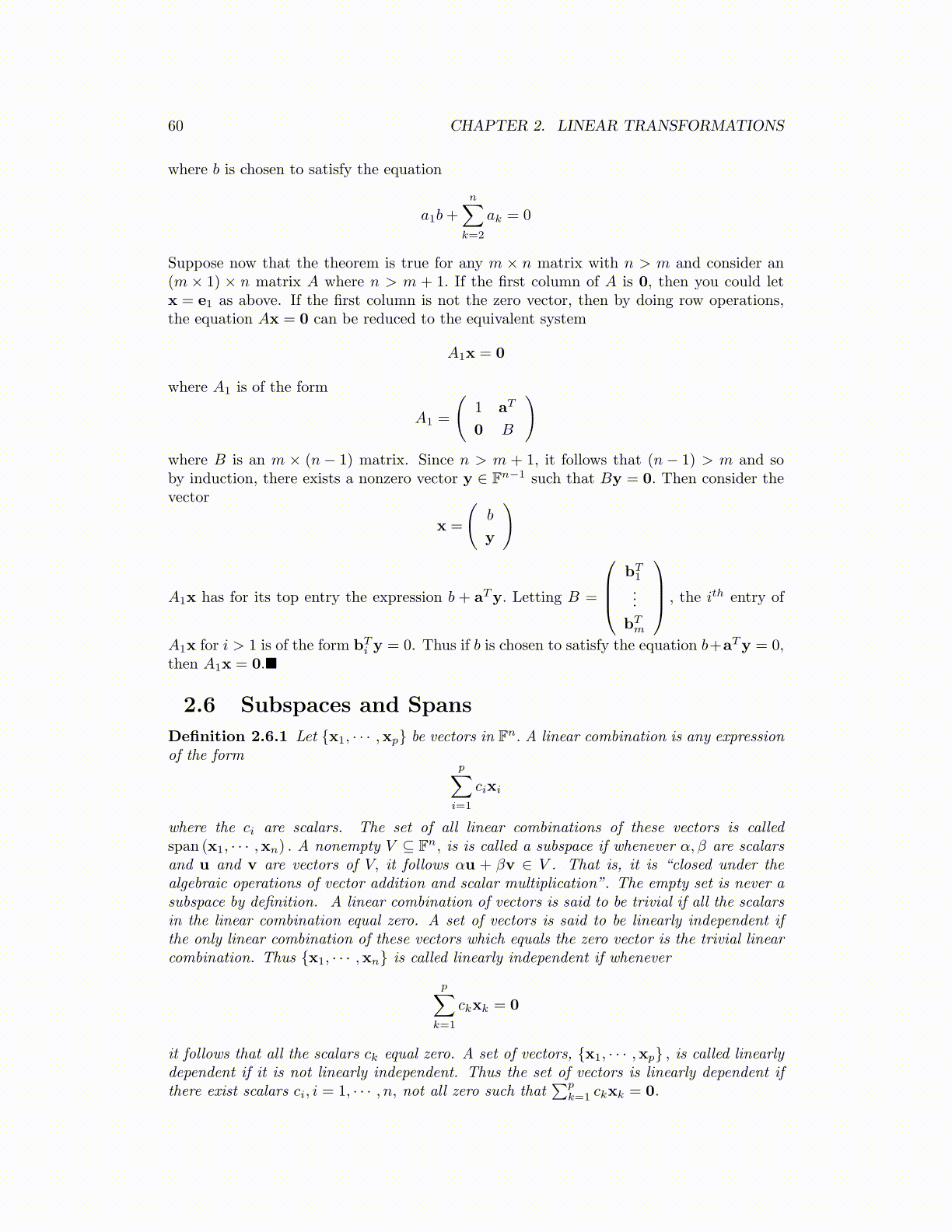
60 CHAPTER 2. LINEAR TRANSFORMATIONS
where b is chosen to satisfy the equation
a1b+
n∑k=2
ak = 0
Suppose now that the theorem is true for any m × n matrix with n > m and consider an(m× 1) × n matrix A where n > m + 1. If the first column of A is 0, then you could letx = e1 as above. If the first column is not the zero vector, then by doing row operations,the equation Ax = 0 can be reduced to the equivalent system
A1x = 0
where A1 is of the form
A1 =
(1 aT
0 B
)where B is an m × (n− 1) matrix. Since n > m + 1, it follows that (n− 1) > m and soby induction, there exists a nonzero vector y ∈ Fn−1 such that By = 0. Then consider thevector
x =
(b
y
)
A1x has for its top entry the expression b + aTy. Letting B =
bT1
...
bTm
, the ith entry of
A1x for i > 1 is of the form bTi y = 0. Thus if b is chosen to satisfy the equation b+aTy = 0,
then A1x = 0.■
2.6 Subspaces and Spans
Definition 2.6.1 Let {x1, · · · ,xp} be vectors in Fn. A linear combination is any expressionof the form
p∑i=1
cixi
where the ci are scalars. The set of all linear combinations of these vectors is calledspan (x1, · · · ,xn) . A nonempty V ⊆ Fn, is is called a subspace if whenever α, β are scalarsand u and v are vectors of V, it follows αu + βv ∈ V . That is, it is “closed under thealgebraic operations of vector addition and scalar multiplication”. The empty set is never asubspace by definition. A linear combination of vectors is said to be trivial if all the scalarsin the linear combination equal zero. A set of vectors is said to be linearly independent ifthe only linear combination of these vectors which equals the zero vector is the trivial linearcombination. Thus {x1, · · · ,xn} is called linearly independent if whenever
p∑k=1
ckxk = 0
it follows that all the scalars ck equal zero. A set of vectors, {x1, · · · ,xp} , is called linearlydependent if it is not linearly independent. Thus the set of vectors is linearly dependent ifthere exist scalars ci, i = 1, · · · , n, not all zero such that
∑pk=1 ckxk = 0.